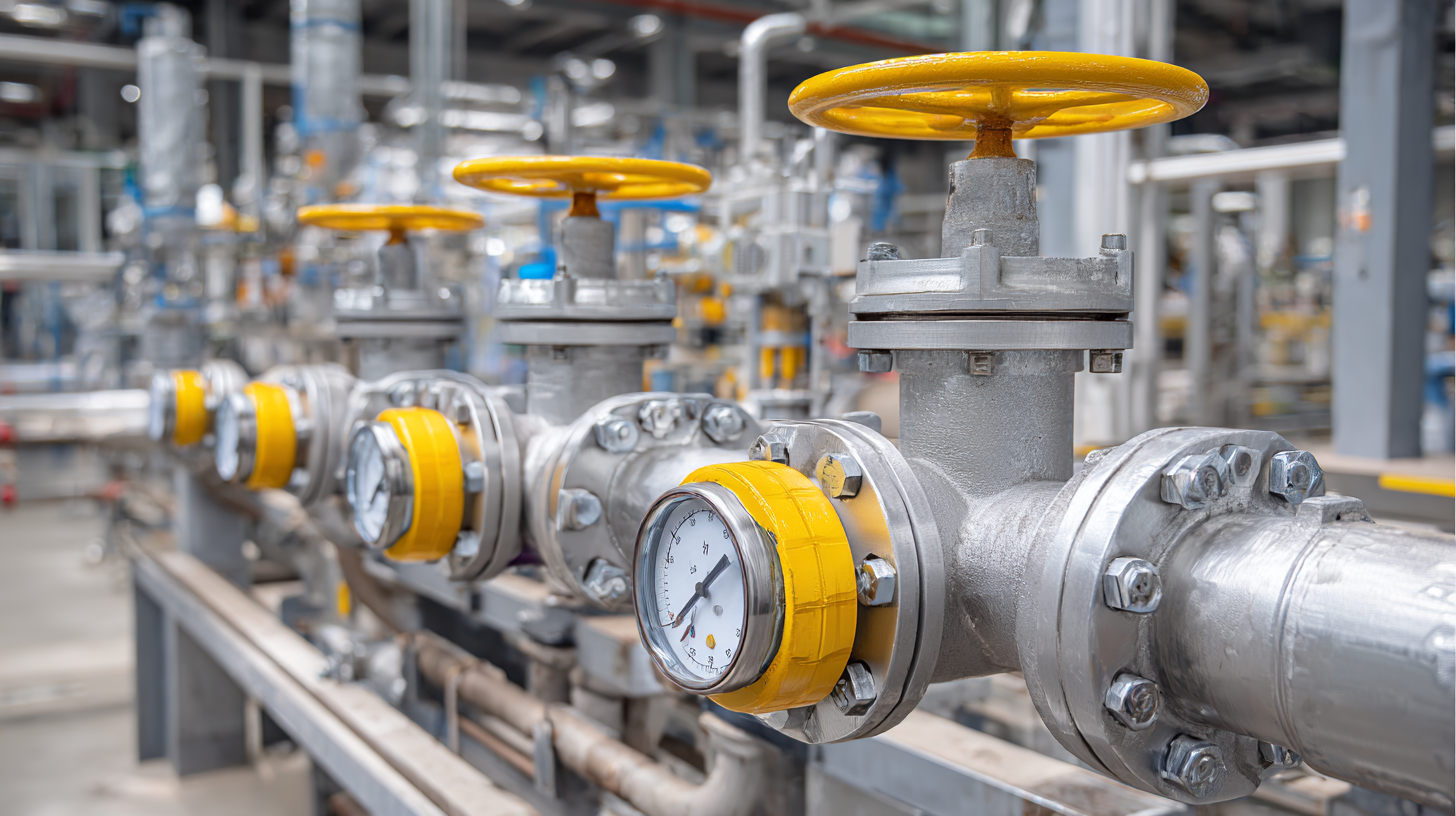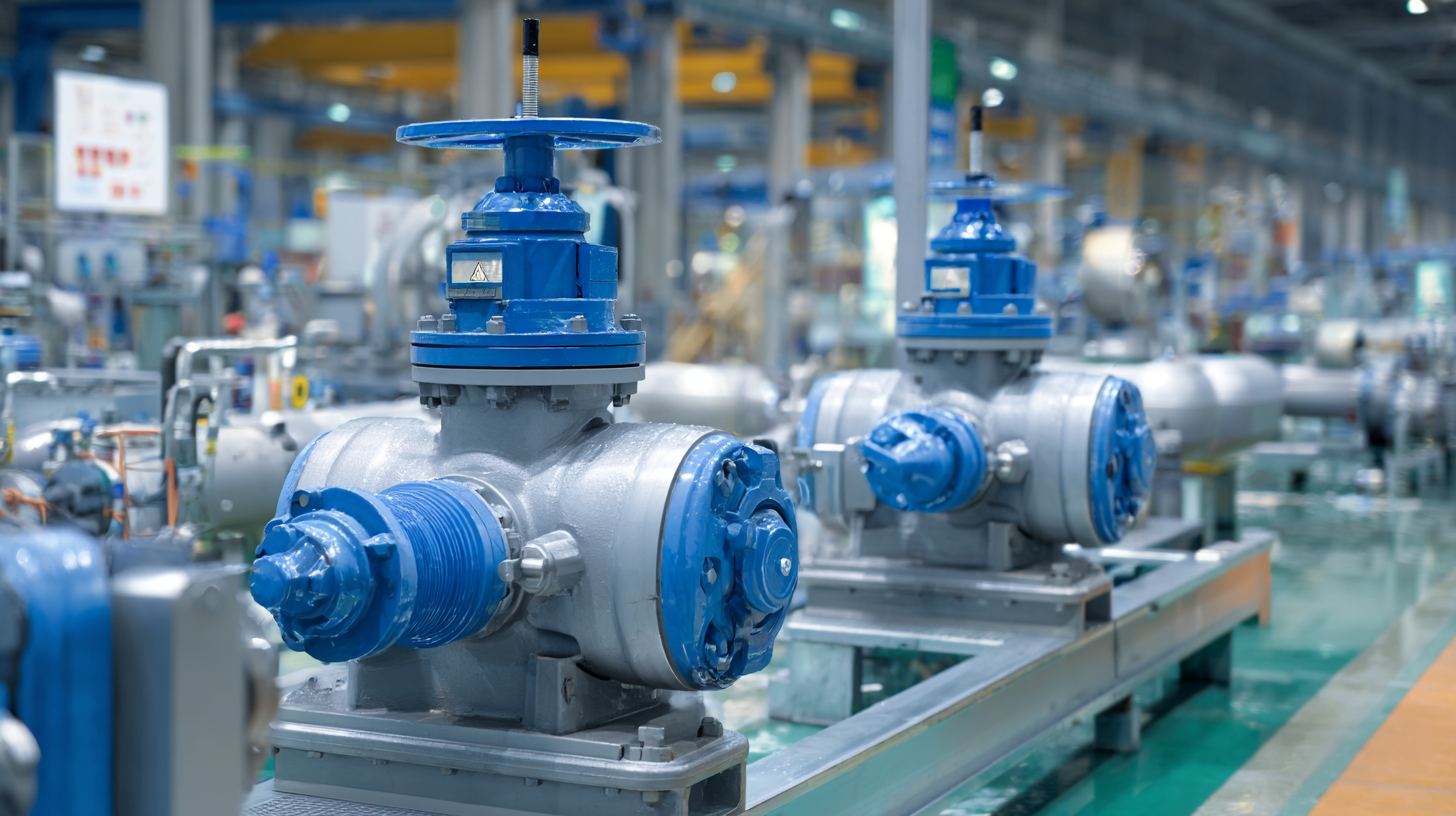Unlocking Efficiency: The Role of Automation Valves in Modern Industrial Processes
In today's rapidly evolving industrial landscape, the integration of technology is crucial for optimizing operations and enhancing productivity. One of the key components driving this transformation is Automation Valves, which play a significant role in streamlining processes across various sectors. According to a report by MarketsandMarkets, the global automation valve market is expected to grow from USD 5.03 billion in 2020 to USD 8.94 billion by 2025, reflecting a compound annual growth rate (CAGR) of 11.4%. This surge underscores the increasing reliance on automation to minimize manual intervention and improve accuracy in processes such as fluid control and pressure regulation. As industries seek to enhance their efficiency and reduce costs, the adoption of Automation Valves emerges as a vital strategy to achieve these goals and maintain a competitive edge in a challenging market environment.

The Importance of Automation Valves in Enhancing Industrial Workflow Efficiency
Automation valves play a crucial role in enhancing industrial workflow efficiency by streamlining processes and minimizing human intervention. In modern manufacturing and processing environments, these valves enable precise control of fluid dynamics, ensuring that systems operate at optimal levels. By automating the flow of materials, businesses can reduce the risk of errors associated with manual operation, leading to increased safety and reliability in production lines.
Moreover, the integration of automation valves with smart technology allows for real-time monitoring and adjustments, boosting responsiveness to changing operational needs. This proactive approach not only improves productivity but also enhances resource management, as companies can optimize energy consumption and reduce waste. As industries continue to embrace automation, the pivotal role of these valves becomes evident, marking a significant advancement in achieving higher efficiencies and driving sustainable practices within modern industrial processes.
Unlocking Efficiency: The Role of Automation Valves in Modern Industrial Processes
| Dimension | Description | Efficiency Impact | Common Applications |
|---|---|---|---|
| Response Time | Time taken for valve to actuate | Improved process control and reduced downtime | Chemical processing, water treatment |
| Energy Efficiency | Minimizing energy consumption during operation | Lower operational costs and reduced carbon footprint | HVAC systems, manufacturing |
| Maintenance Interval | Frequency of valve maintenance | Less frequent maintenance reduces operational interruptions | Oil and gas, food processing |
| Control Precision | Accuracy in flow and pressure control | Enhanced product quality and consistency | Pharmaceuticals, semiconductor manufacturing |
| Integration Capability | Compatibility with existing automation systems | Facilitates upgrade of legacy systems without major overhaul | Textile, water distribution |
Key Statistical Insights on the Impact of Automation Valves on Operational Performance
Automation valves have become pivotal in enhancing operational efficiency across various industrial sectors. Statistical data reveals that the implementation of automated valve systems can reduce operational costs by as much as 30%. This significant reduction stems from improved accuracy in process controls, which minimizes wastage and energy consumption. Facilities leveraging automation valves also report a 25% increase in productivity due to faster response times and reduced manual intervention requirements.
Additionally, safety improvements are evident with the use of automation valves. Industries using these systems see a 40% decrease in operational risks related to human error. This is critical in sectors such as oil and gas, where precise control over flow and pressure can prevent catastrophic failures. Furthermore, maintenance metrics indicate that automated systems require 50% less maintenance time, allowing for more focus on core operational activities rather than routine inspections. Such insights underscore the transformative impact of automation valves on modern industrial processes, reinforcing their role as essential components in optimizing performance.
Comparative Analysis: Manual vs. Automated Valve Systems in Industrial Applications
In modern industrial applications, the choice between manual and automated valve systems plays a crucial role in process efficiency and safety. Manual valves require human operators to control the flow of liquids, gases, or other substances, which can lead to delays and increased potential for human error. In environments where rapid response times are necessary, relying on manual operations may compromise system performance, leading to inefficiencies and higher operational costs.
Conversely, automated valve systems leverage technology to provide precise control over processes. These systems can be programmed to respond instantaneously to changes in pressure, temperature, or flow rate, enhancing overall operational flexibility. The integration of automation not only reduces the risk of human error but also allows for remote monitoring and control, significantly improving safety and productivity. Furthermore, automated valves can operate continuously without breaks, ensuring a more consistent product quality and reduction in downtime across manufacturing processes. As industries strive for greater efficiency, the comparative advantages of automated systems over manual counterparts become increasingly evident.

Exploring Cost Benefits: How Automation Valves Reduce Operational Expenditures
 Automation valves play a vital role in modern industrial processes, particularly in enhancing cost efficiency. By integrating automation into valve systems, companies can significantly reduce labor costs associated with manual valve operation. This transition not only minimizes human error but also ensures consistent performance, leading to lower maintenance expenses. Furthermore, automation valves enable real-time monitoring and control, which can optimize process flows and energy consumption, resulting in substantial savings over time.
Automation valves play a vital role in modern industrial processes, particularly in enhancing cost efficiency. By integrating automation into valve systems, companies can significantly reduce labor costs associated with manual valve operation. This transition not only minimizes human error but also ensures consistent performance, leading to lower maintenance expenses. Furthermore, automation valves enable real-time monitoring and control, which can optimize process flows and energy consumption, resulting in substantial savings over time.
Tip: When considering the implementation of automation valves, assess the specific needs of your facility. Evaluate the processes that are most affected by manual intervention and prioritize automation in these areas to maximize efficiency and cost savings.
Another key benefit of automation valves is their ability to seamlessly integrate with existing systems, providing a flexible solution to enhance operational performance. By automating flow control, businesses can maintain precise variable adjustments that directly impact production quality. This adaptability can lead to reduced waste and a more sustainable operation.
Tip: Ensure that your team is trained on the latest automation technologies. Familiarity with the systems not only enhances their effectiveness but also fosters a culture of continuous improvement within your organization.
Emerging Technologies in Automation Valves: Trends Shaping the Future of Industry
Emerging technologies in automation valves are reshaping the landscape of industrial processes by improving operational efficiency and reducing costs. According to a recent report by MarketsandMarkets, the global automation valves market is expected to reach $6.16 billion by 2026, growing at a CAGR of 6.8% from 2021. This growth is driven by the increasing adoption of smart automation systems and the integration of the Industrial Internet of Things (IIoT) in manufacturing operations. These advancements enable real-time monitoring and control, significantly enhancing the precision and reliability of valve operations.
Another significant trend shaping the future of automation valves is the development of advanced materials and technologies, such as predictive maintenance and artificial intelligence. A report by Research and Markets indicates that predictive maintenance can reduce maintenance costs by 10-40% while increasing equipment lifespan by 20-40%. As industries move towards more sustainable practices, the integration of automation valves with green technologies promises not only to enhance performance but also to contribute to energy efficiency and waste reduction, making them essential components of modern industrial systems.
Unlocking Efficiency: The Role of Automation Valves in Modern Industrial Processes
Related Posts
-

Exploring Key Characteristics of Automated Valves and How to Choose the Right One for Your Industry
-

Exploring the Characteristics and Applications of Best Valve Valves: A Comprehensive Guide for Global Buyers
-

7 Essential Benefits of Choosing Valve Ball Valves for Your Piping Systems
-

Real World Applications of Best Ball Valves and Solutions to Common Challenges
-

Unlocking Excellence: Comprehensive Technical Specifications for the Best Full Port Ball Valve
-

How to Choose the Right High Temperature Ball Valve for Your Industry Needs
